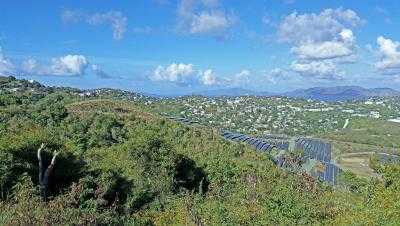US could install 193 TWs of solar, new study finds
 A new study from the National Renewable Energy Laboratory (NREL) finds that at this point a total of just under 193 terawatts (TWs) of solar could be built in the U.S. The report, “U.S. Renewable Energy Technical Potentials: A GIS-Based Analysis,” found that the total amount of renewable energy including wind, geothermal and hydro could reach 212 TWs.
A new study from the National Renewable Energy Laboratory (NREL) finds that at this point a total of just under 193 terawatts (TWs) of solar could be built in the U.S. The report, “U.S. Renewable Energy Technical Potentials: A GIS-Based Analysis,” found that the total amount of renewable energy including wind, geothermal and hydro could reach 212 TWs.
In all, the report found that the majority of the potential solar power (153 terawatts) could be installed in the form of rural utility-scale photovoltaics. The second largest solar source could be 38 terawatts of concentrating solar power, followed by 1200 gigawatts of urban utility-scale photovoltaics. Rooftop photovoltaics could provide another 664 gigawatts, the report found. Of all other sources of renewable power, on-shore wind was the next largest at 11 terawatts of electric generation.
The two states with the best resources for rural solar deployment are the two largest states and also the two biggest oil states, Texas and Alaska. Texas had the potential for 20,411 gigawatts, followed by Alaska, with the potential for 9,005 gigawatts of rural photovoltaics. They were followed by New Mexico, which had the potential for 7,087 gigawatts of rural photovoltaics.
The report looked at what could be built out based on technology, location, resources availability, environment and land-use. However, in most cases it didn’t consider economic or market constraints. As such the report doesn’t represent how much of each technology will get built out. But it attempts to unify assumptions and application of methods to allow cross-technology comparison. While the study shows the potential it does not include existing renewables capacity, according to report author and GIS Analyst Anthony Lopez.
The report follows the Department of Interior’s (DOI’s) release of the final Solar Programmatic Environmental Impact Statement for developing solar in six southwestern U.S. states. “The methodologies employed to generate the base resource in the PEIS are very similar to ours,” Lopez said.
While the study considered the potential of renewables, it didn’t look at how that energy is being used or taken advantage of, for instance, whether solar is currently being deployed more in rural areas or on homes. “We hope to have a sense of this in the near future. We are currently working with the Solar Energy Industries Association who has a database of PV installations,” Lopez said.



